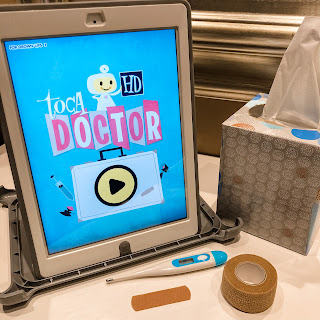Checking back to your System Analysis Observation and Motor Speech Hierarchy (SAO/MSH) to determine your first priority. I find I get more "bang for my buck" working at Stage IV/Labial-Facial control. I can work in syllable PROMPTs to help support jaw at mid-line in addition to building appropriate bi-labial contact/rounding/retraction.
Farm Washing Activity
My students love to give toys a bath. I start with whatever is motivating to them!Have the characters jump in "mud" (use play-doh or something sensory)
Clean them off with a spray bottle, small brush and towel
Turbo-Dry them in a salad spinner and send them home
PROMPT lexicon: oh no, mud, moo, baa, pig, peep, do two, wash it, go home
Digital version available here. Full YouTube demonstration here.
Rock Gems
Because learning rocks, use this fun activity with or without the Learning Resources Gemstones Game during speech or occupational therapy! (Use plastic eggs if you don't have the Gemstones).
PROMPT lexicon: open, same, match, put it in, shut it, I do, you do, need it, don't need it
Grab the activity here on TPT
Toca Kitchen 2
Toca Kitchen 2 is an engaging iPad app where students can create different meals for characters.Check out the app companion and the BOOMCARDS here
Toca Tea Party
Set the table, choose your favorite cookies and cakes, serve tea and you're good to go! Simply eat and drink with your finger. With Toca Tea party, you can play together with your kids in a way that stimulates their imagination.
Follow Directions
Sequence
Vocabulary
Request/comment
PROMPT lexicon: uh oh/oh no, need, more, tea, hot, do you need more? Eat it, need it, put it on
Zingo
If you're on this page you must be a Speech Language Pathologist, and therefore own a Zingo! of some kind...Use this FREEBIE to:
Build Sentences
Describe pictures
PROMPT lexicon: put it in, push it, he/him, she/her, give, need it, don't need it, go


















































